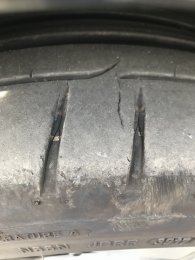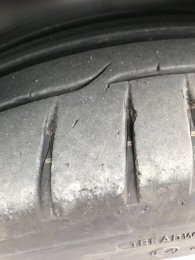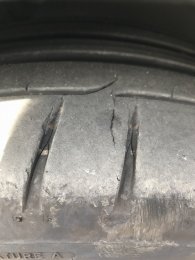Reltub
Registered User
- Joined
- Sep 17, 2016
- Messages
- 47
- Reaction score
- 62
- Points
- 18
I’d just like some advice on this as I have never seen it before. I purchased my A3 in October 2017 and it has covered just under 10,000 Miles - a lot of my driving is city driving as I’m an inspector for a local council. I have noticed a lot of smaller tears on all 4 of my wheels, with the front 2 being worse than the rear.
Any advice? Is this normal wear and tear or could I have faulty tyres?
Any advice? Is this normal wear and tear or could I have faulty tyres?






